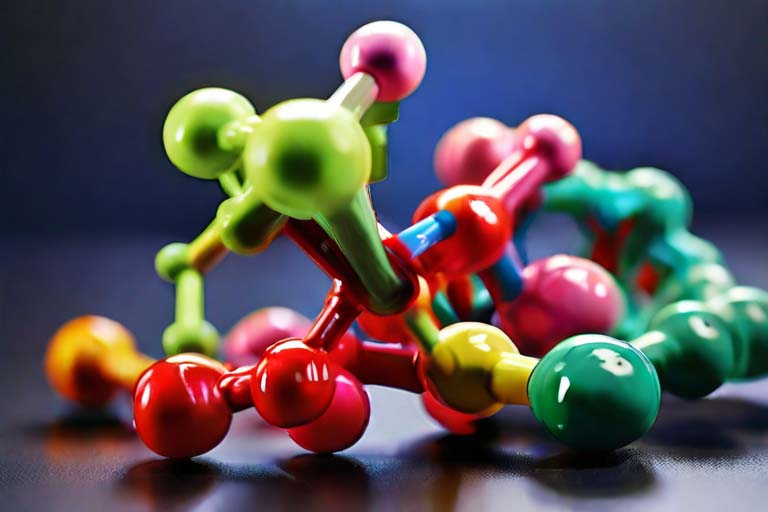

 Amino Acid- Understanding its Definition, Types, and Functions
Amino Acid- Understanding its Definition, Types, and Functions
Definition of Amino Acid
Amino acids are organic compounds that serve as the building blocks of proteins. They are composed of an amino group (-NH2), a carboxyl group (-COOH), a hydrogen atom, and a side chain (often referred to as an R-group) that varies among different amino acids. There are 20 standard amino acids that are commonly found in proteins, each differing in their side chain structure. These amino acids are linked together by peptide bonds in a specific sequence to form polypeptide chains, which then fold into functional protein structures. Amino acids play crucial roles in various biological processes, including enzyme catalysis, cell signaling, and structural support. They are essential for the proper functioning and maintenance of living organisms.
What are the Twenty Amino Acids and their Functions?
Amino acids are organic compounds that serve as the building blocks of proteins. There are 20 standard amino acids that are commonly found in proteins, each with its own unique structure and function. Here’s a list of the twenty amino acids along with their abbreviations and a brief description of their functions:
1. Alanine (Ala, A): Alanine plays a key role in the energy-producing process called the citric acid cycle and also acts as a neurotransmitter in the central nervous system.
2. Arginine (Arg, R) : Arginine is involved in protein synthesis, wound healing, immune function, and the regulation of blood pressure.
3. Asparagine (Asn, N): Asparagine is important for the synthesis of proteins and nucleotides and is involved in the storage and transport of nitrogen in plants.
4. Aspartic acid (Asp, D): Aspartic acid plays a critical role in the urea cycle, which is responsible for removing excess nitrogen from the body.
5. Cysteine (Cys, C) : Cysteine is essential for the formation of disulfide bonds, which stabilize the structure of proteins, and it also plays a role in antioxidant defense.
6. Glutamine (Gln, Q): Glutamine is involved in various metabolic processes, including the synthesis of proteins, nucleotides, and other amino acids, and it also serves as a precursor for neurotransmitters.
7. Glutamic acid (Glu, E): Glutamic acid is an important neurotransmitter in the central nervous system and plays a role in learning and memory.
8. Glycine (Gly, G) : Glycine is the simplest amino acid and serves as a building block for proteins. It also plays a role in the synthesis of heme, DNA, and RNA.
9. Histidine (His, H): Histidine is involved in the catalytic activity of enzymes and plays a role in pH regulation and the immune response.
10. Isoleucine (Ile, I): Isoleucine is essential for protein synthesis and is also involved in energy production and the regulation of blood sugar levels.
11. Leucine (Leu, L) : Leucine plays a key role in protein synthesis and muscle repair and also serves as a signaling molecule in various metabolic pathways.
12. Lysine (Lys, K) : Lysine is involved in protein synthesis, collagen formation, and the regulation of calcium absorption.
13. Methionine (Met, M) : Methionine is important for protein synthesis and serves as a precursor for other molecules, including cysteine and the antioxidant glutathione.
14. Phenylalanine (Phe, F) : Phenylalanine is involved in the synthesis of other molecules, including neurotransmitters, hormones, and melanin.
15. Proline (Pro, P) : Proline plays a role in protein structure and stability and is also involved in the synthesis of collagen and the regulation of cell growth and differentiation.
16. Serine (Ser, S) : Serine is involved in the synthesis of proteins, nucleotides, and other amino acids, and it also plays a role in cell signaling and the regulation of enzyme activity.
17. Threonine (Thr, T) : Threonine is essential for protein synthesis and is also involved in the formation of antibodies and the maintenance of proper immune function.
18. Tryptophan (Trp, W) : Tryptophan is a precursor for the synthesis of serotonin and melatonin, which are neurotransmitters involved in mood regulation and sleep-wake cycles.
19. Tyrosine (Tyr, Y): Tyrosine is a precursor for the synthesis of neurotransmitters such as dopamine, norepinephrine, and epinephrine, and it also plays a role in the production of thyroid hormones.
20. Valine (Val, V): Valine is involved in protein synthesis, energy production, and the repair and growth of muscle tissue.
These amino acids play critical roles in various biological processes, including protein synthesis, metabolism, neurotransmission, and immune function.